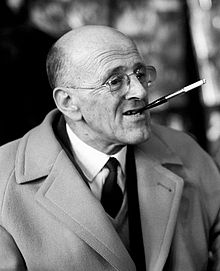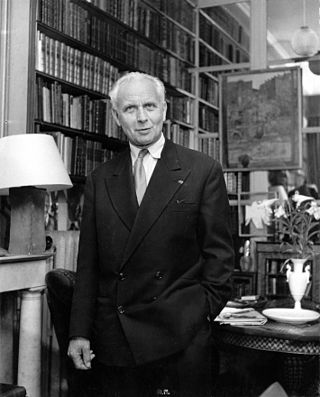
Louis Aragon was a French poet who was one of the leading voices of the surrealist movement in France. He co-founded with André Breton and Philippe Soupault the surrealist review Littérature. He was also a novelist and editor, a long-time member of the Communist Party and a member of the Académie Goncourt. After 1959, he was a frequent nominee for the Nobel Prize in Literature.
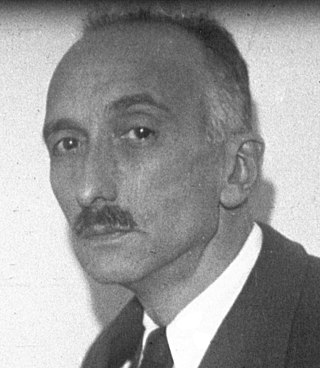
François Charles Mauriac was a French novelist, dramatist, critic, poet, and journalist, a member of the Académie française, and laureate of the Nobel Prize in Literature (1952). He was awarded the Grand Cross of the Légion d'honneur in 1958. He was a life-long Catholic.
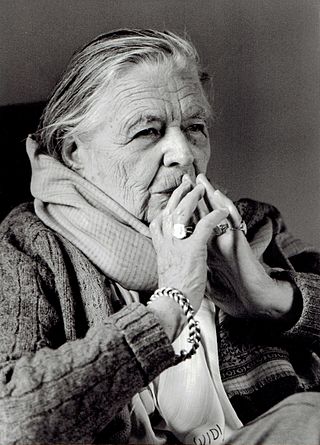
Marguerite Yourcenar was a Belgian-born French novelist and essayist who became a US citizen in 1947. Winner of the Prix Femina and the Erasmus Prize, she was the first woman elected to the Académie Française, in 1980.

Joseph Kessel, also known as "Jef", was a French journalist and novelist. He was a member of the Académie française and Grand Officer of the Legion of Honour.

Jacques Soustelle was an important and early figure of the Free French Forces, a politician who served in the French National Assembly and at one time served as Governor General of Algeria, an anthropologist specializing in Pre-Columbian civilizations, and vice-director of the Musée de l'Homme in Paris in 1939. Soustelle and his followers opposed any compromise with anticolonial activists in Algeria in the Algerian War.

René Grousset was a French historian, curator of both the Cernuschi and Guimet Museums in Paris, and a member of the prestigious Académie française. He wrote several major works on Asiatic and Oriental civilizations, with his two most important works being Histoire des croisades et du royaume franc de Jérusalem (1934–1936) and The Empire of the Steppes: A History of Central Asia (1939), both of which were considered standard references on the subject.

Marc Boegner, commonly known as pasteur Boegner, was a theologian, pastor, essayist, notable member of the French Resistance and a notable voice in the ecumenical movement.
Michel Laclotte was a French art historian and museum director, specialising in 14th and 15th century Italian and French painting.

Mialet is a commune in the Gard department in southern France.

Jean Clair is the pen name of Gérard Régnier. Clair is an essayist, a polemicist, an art historian, an art conservator, and a member of the Académie française since May, 2008. He was, for many years, the director of the Picasso Museum in Paris. Among the milestones of his long and productive career is a comprehensive catalog of the works of Balthus. He was also the director of the Venice Biennale in 1995.

René de La Croix de Castries was a French historian and a member of the House of Castries. He was the sixteenth member elected to occupy seat 2 of the Académie française in 1972. He wrote under the pen name Duc de Castries, a courtesy title drawn from his family’s extinct dukedom.
Michel Droit was a French novelist and journalist. He was the father of the photographer Éric Droit (1954–2007).

René Huyghe was a French writer on the history, psychology and philosophy of art. He was also a curator at the Louvre's department of paintings, a professor at the Collège de France and from 1960 a member of the Académie Française. He was the father of the writer François-Bernard Huyghe.

Henri Massis was a conservative French essayist, literary critic and literary historian.
Roger Chauviré was a French writer, winner of the 1933 edition of the Grand Prix du roman de l'Académie française.
André Brincourt was a French writer and journalist.
Édouard Georges Mac-Avoy was a French artist and portraitist.
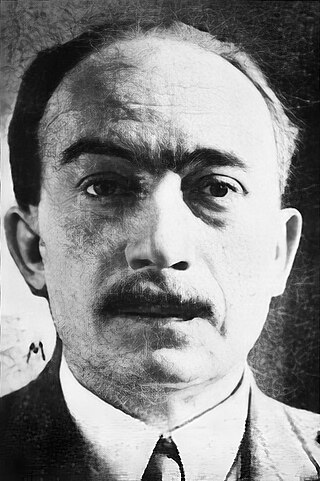
Émile Mireaux was a French economist, journalist, politician and literary historian. In the 1930s, he edited Le Temps and contributed to other right-leaning journals. He became a senator in 1936, and briefly served as a minister in 1940. From 1940 until his death, he held a chair in political economy, statistics and finance at the Académie des Sciences Morales et Politiques.
Jacques Thévenet was a French painter and illustrator.

Odette Teissier du Cros was a French ethnologist, who founded and was the first curator (1963–83) of the Musée cévenol in Le Vigan.
